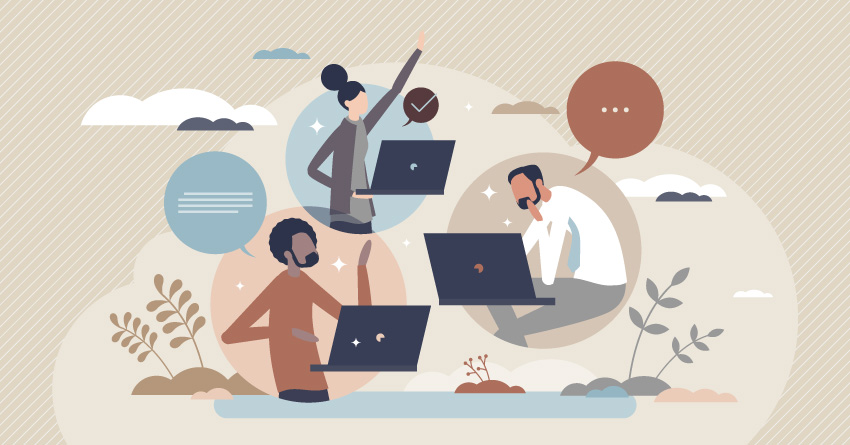By Steven Kowalski, Ph.D.
Author, Creative Together: Sparking Innovation in the New World of Work
President and Founder, Creative LicenseTM Consulting Services
In Creative Together: Sparking Innovation in the New World of Work, we explore, stage by stage, how to activate your creative potential and use it to create together. Chapter Three of Adventure One focuses on greeting the unknown with passion instead of dread. In fact, it’s tricky to venture into the unknown. None of us can know how things will work out. You can’t force your plan. And when outcomes are so ambiguous that you can’t see past the first few steps, there are no guarantees.
Despite our attempts to avoid or control the unknown, all creative quests require some measure of unknowing as we seek to change the status quo and invent solutions that generate new value. In the unknown, conscious, proactive access to our creativity—along with an understanding of the dynamics of discovery—are among our most important assets.
Through my doctoral research, and as a life-long student of both creativity and discovery, I’ve found that the processes of creativity, discovery, innovation, and transformation all share four similar phases. And while these phases have been named many things by different authors and researchers, they contain similar elements, key actions, and leverage points for intervention.
Phase One: Clarifying Purpose. Circumstances give rise to a need, want, or problem—requiring a change from the status quo and the generation of something new. A “purpose” emerges, which initiates the creative process—whether that purpose is consciously and explicitly stated or not.
Phase Two: Envisioning. A vision emerges of some solution or set of solutions that may solve the problem and/or answer the need or want. In the search for ideas, materials, and solutions, people encounter (and must navigate) the tension between constraints and potential possibilities. The search for answers involves both conscious and unconscious activity.
Phase Three: Producing. People work to realize their vision by experimenting and testing ideas and hypotheses, crafting mock-ups and prototypes, and adjusting solutions to realize, implement, and operationalize their vision. This can involve tests of logic and coherence in the case of an idea, and/or the generation of something tangible to tinker with and share with others.
Phase Four: Sharing. Here, we bring the output of our efforts (e.g., ideas, solutions, products, services, and methods) to others. Some believe that sharing is not a core phase of the creative process. Others believe it is a vital component of living with solutions, iterating and improving upon them, evaluating if solutions are viable, valued, and scalable, and understanding the value that is generated over time. Whether essential or not, in most cases sharing the value of solutions is the core motivation for engaging in the process to begin with.

In Chapter Three of Adventure One, I write about how these four phases play out in two different pathways:
I encourage you to learn from these important perspectives of how creativity and discovery intertwine. Use this wisdom as a guide to strengthen your footing and help you choose whether to charge forward, stand still, change direction, retrace your steps, listen inside or seek the advice of others, stick to your plan, or scout for a new perspective.
Though not described in the book, it’s valuable to consider a third pathway because of its utility and the pervasiveness by which it has entered the business lexicon.
Design Thinking was initially developed by IDEO and has taken hold as the ‘go-to’ process for innovation within business and organizational settings. It provides a structured (if somewhat truncated in relation to Cajete’s visioning cycle) process that represents the core elements of the creative process, framed upon the concept of value creation.
Originally developed primarily for inventing and designing new products and services for existing customers and markets, today Design Thinking is used as a means to design almost anything. And it is being increasingly blended with other methodologies like ‘Agile” and “Lean.”
Much has been written and there are vast resources available to explore the different phases of this process. Sometimes you will find stripped down versions of the process, and other times you may see depictions using different words or with more steps along the path. Briefly, in Design Thinking, there are four distinct and interconnected phases:
Keep in mind, these are semi-distinct phases, but they are at the same time highly interdependent. There are tips and tricks for optimizing value within each phase. However, the real art to using Design Thinking is to leverage it as a kind of map—to know where you are along the path; know what kinds of questions to ask (and which to save for later), know the kinds of outputs that are expected from each phase, and know when you are ready to move on. Then, movement through and between the phases becomes more of a fluid, agile dance rather than a forced march.

There’s a reason why the creative process, the process of transformation described in the Hero’s Journey, the Visioning Process, and the Design Thinking Process all overlap and follow a similar, shared path. They are all processes of becoming anew. They all require crossing the threshold into the unknown and emerging changed, with new gifts, new learnings, new mindsets and approaches, and new skills and behaviors. They all require passage through similar tests and Swamps. And they all require a compelling, meaningful purpose to spur movement forward despite the dangers of the unknown.
Think of a current project or situation where you are involved in generating something new. As you do, use any of the reflection questions that follow to leverage the wisdom from these three different pathways as you move through the phases of creativity and discovery:
Clarifying Purpose
Envisioning
Producing
Sharing
1 Joseph Campbell, The Hero with a Thousand Faces (New World Library, 1949).
2 Gregory Cajete, Look to the Mountain: An Ecology of Indigenous Education (Kivaki Press, 1994).
© 2021 Steven Kowalski for Creative License Consulting™. All rights reserved.
